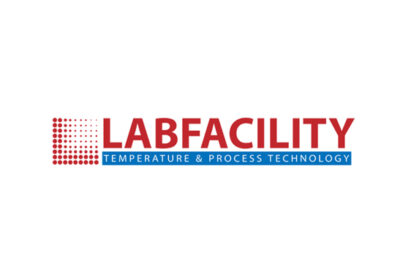In the last 12 months there has been a noticeable uptake in robotics in the food processing sector. Although way behind the rest of the EU and US markets in terms of sales, global food security, volatile commodity prices and the much reported grocery price wars are all driving manufacturers towards the same conclusion; efficiency is paramount and introducing robotics provides that all-important competitive edge.
Several important surveys, including the Food & Drink Global Ambitions report 2014* prepared by Lloyds Commercial Banking flagged the industry challenge of rising commodity cost pressures, with 83% of respondents citing it as an issue. According to the World Bank report**, food commodity prices, which have declined by 20% since 2011, are projected to drop by a further 4% in 2015. Wheat prices are expected to stabilise; Sugar is projected to maintain an upward trajectory; Cocoa futures are likely to remain under pressure; Coffee prices are forecast to remain elevated; Corn prices may increase slightly.
Fact is, when it comes to these basic commodities, we are at the mercy of the weather, harvests, exchange rates and a global supply chain, which can cause significant price swings. It’s a worry for manufacturers. With retailers promising customers further price cuts in the first quarter of 2015, this will continue to squeeze food and drink producers on pricing margins, making the efficiency argument even stronger.
Robotics plays a major role in boosting production capacity, reducing waste as well as protecting product quality. Having powered through the recession, now’s the time to capitalise on new opportunities by making further efficiency improvements, another point reinforced by the EEF/Aldermore report*** released in January 2015.
Human/robotic face-off
The matter of human vs. machine is a long-standing conundrum. We are reaching the tipping point where the true potential of a robot worker is being recognised. Well known for their ability to increase yield, lift and shift bulk products, and provide repeatable and consistent product pick and placement, robotics are now taking on more light-touch and delicate duties such as adding decorative features to cakes.
The food and drink sector is probably the most prone to innovations, where product quality and contamination top the list of concerns for professionals according to the Lloyds Global Ambitions report.
In recent years we’ve seen significant advancement in hygienic and sanitary solutions for food processing and primary packaging applications. Only in the last 12-18 months have IP69K certified robots hit the market, meeting the toughest of hygiene standards and helping to protect brand reputation. It’s an area that FANUC has been especially proactive in. Our range of 20+ palletising and pick and place systems, many of which are IP67K certified, now include two new IP69K certified full wash-down models, adhering to the most stringent hygienic production regulations. Aside from not contracting illnesses, these washdown robots help to eliminate foreign bodies, such as hair or nails, which could fall into and contaminate food products.
The advancements in vision technology also address another regular concern expressed by food producers; that of replicating human quality checks. In reality, adding ‘sight’ to a robot can aid quality control. With vision systems such as iRVision, vital inspection, positioning and orientation tasks can be automated. What’s more, packaging code reading capabilities can play a key role in meeting product traceability requirements, further enhancing quality control.
Performance and output aside, there’s also the issue of safety. For many food processors with arduous, labour-intensive manufacturing processes, it’s the robot’s ability to reduce injuries to their workforce which matters most, particularly within harsh environments. Robots can also carry out work that would be impossible for humans.
Setting our sights higher
So, what does this mean to the brilliant minds that have created these robots? If our workforce is becoming more autonomous, are we at risk of being taken over by this artificial intelligence?
There are obviously divided opinions about whether Artificial Intelligence is a long-term threat. Bill Gates in a recent Reddit Ask Me Anything (AMA) seems to have shifted his seat into the Stephen Hawking camp. Other radical thinkers suggest we humans will be elevated above the level of machines. While the march of the robots seems inevitable, people whose positions become redundant due to automation are invariably given roles elsewhere within the business, often in engineering and development fields.
Right now, specialist knowledge and skills in food and drink manufacturing is one of the greatest challenges facing the industry. A report by the Food & Drink Federation suggests that in order to continue growing, innovating and meeting future challenges, such as developing healthier options and increasing resource efficiency, the food and drink manufacturing sector must recruit 170,300 new recruits between 2010 and 2020****. The federation’s research suggests that more than 41,000 (24%) of these roles will be in managerial positions and other professional occupations. In our view, automation safeguards the roles of the majority, making the business more efficient and enabling it to maintain and hopefully expand local and export contracts through improved quality and production throughput.
Figures also show that the industry suffers from a number of skills gaps, namely in science, technology and engineering related roles. On the upside, Apprenticeships are growing in popularity among both employers and young people according to figures released by the National Apprenticeship Service in 2014, increasing by a quarter year on year. And a BIS-commissioned survey has found that the number of 11-14 year olds thinking about working in engineering has jumped by six per cent, with greater interest from females too. What’s more, more parents are encouraging their children to look at careers in engineering
In our view, the opportunities of automation are too great to ignore. The key is to maintain control of this machine progression. As with most businesses today, the global marketplace beckons food producers. The efficient ones that can offer improved quality and high production throughput through automating processes are the ones that will survive and thrive.
REFERENCES
* Food & Drink Global Ambitions report 2014 https://resources.lloydsbank.com/insight/food-and-drink-report/






Leave a Reply